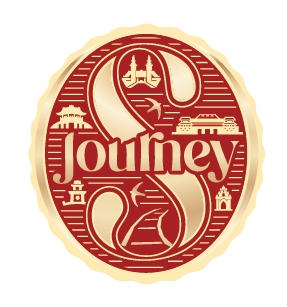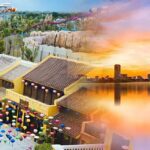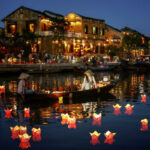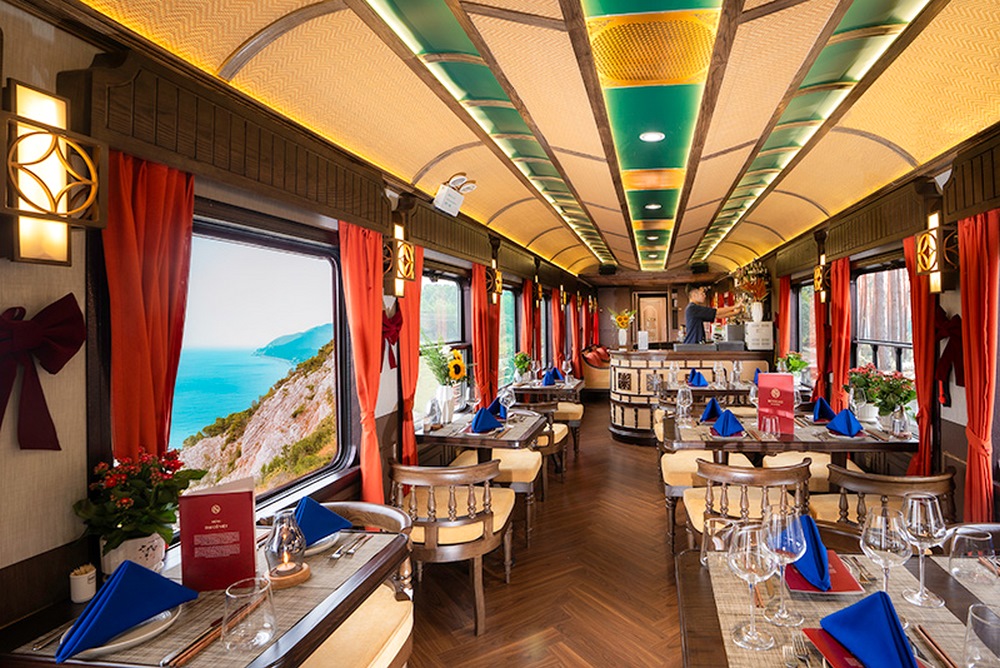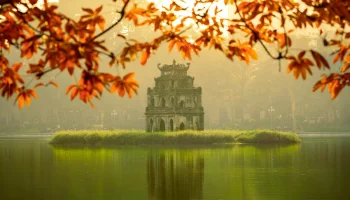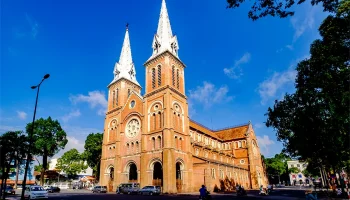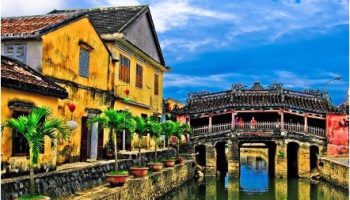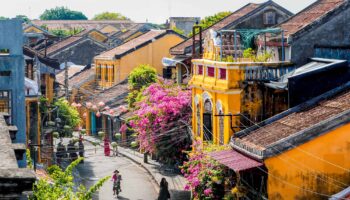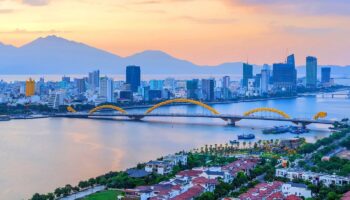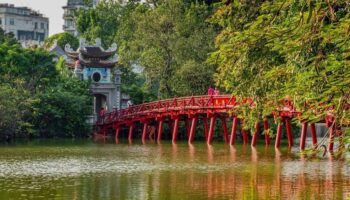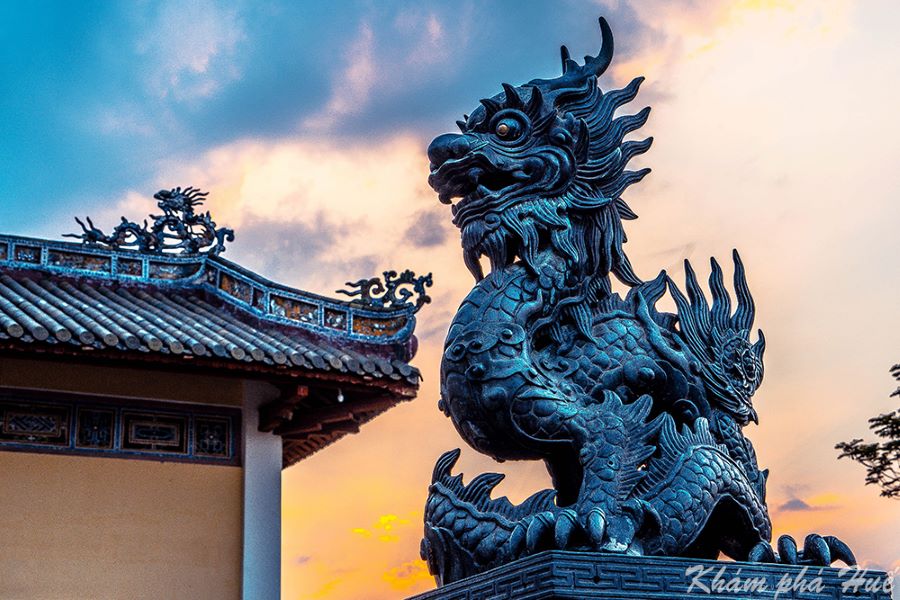
Explore Vietnamese Dragons: History, Symbolism, and Cultural Impact
In Vietnamese culture, the dragon is a benevolent symbol of prosperity, protection, and harmony. It is deeply rooted in Vietnamese history and folklore, and its presence in modern Vietnam carries a great impact spiritually. The dragon symbol is a testament to Vietnam’s rich cultural heritage, a valuable reminder of tradition, and an enduring symbol of strength.
Table of Contents
ToggleOrigins of the Vietnamese Dragons
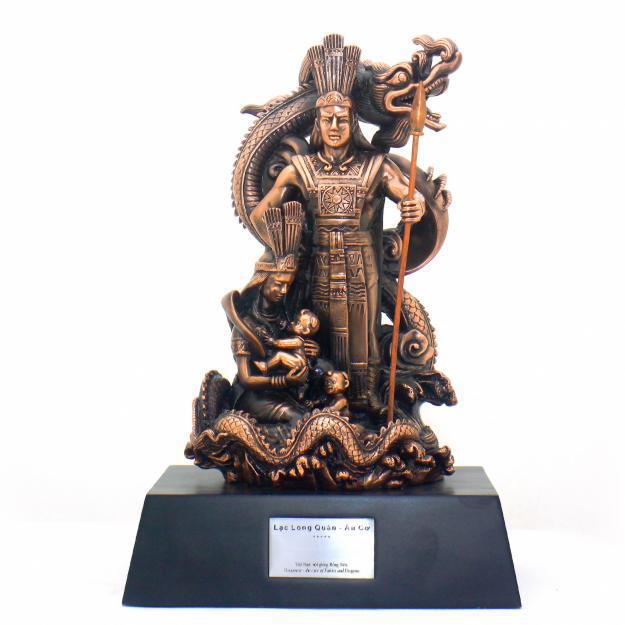 The dragon symbol in Vietnam embodies the nation’s founding story that presents the identity, spirituality, and unity of diverse Vietnamese. According to the legend, Lac Long Quan – the dragon king, married Au Co – the fairy queen. Together they have 100 sons who are considered as the ancestors of Vietnamese people.
The dragon symbol in Vietnam embodies the nation’s founding story that presents the identity, spirituality, and unity of diverse Vietnamese. According to the legend, Lac Long Quan – the dragon king, married Au Co – the fairy queen. Together they have 100 sons who are considered as the ancestors of Vietnamese people.
Though they come from vastly different worlds, Lac Long Quan from the seas and Au Co from the mountains – their marriage harmonizes the differences between the opposites: water and land, dragon and fairy, sea and mountain. With such unity, the creature becomes a presentation of Vietnam’s geography and the cultural mix between coastal and inland regions.
The story evolves far more than just a tale, it is a cornerstone that symbolizes Vietnam’s origin as a “land of dragons and fairies”. The dragon, in particular, is the symbol of power, prosperity, and deep connection to water.
Vietnamese Dragons Cultural Significance
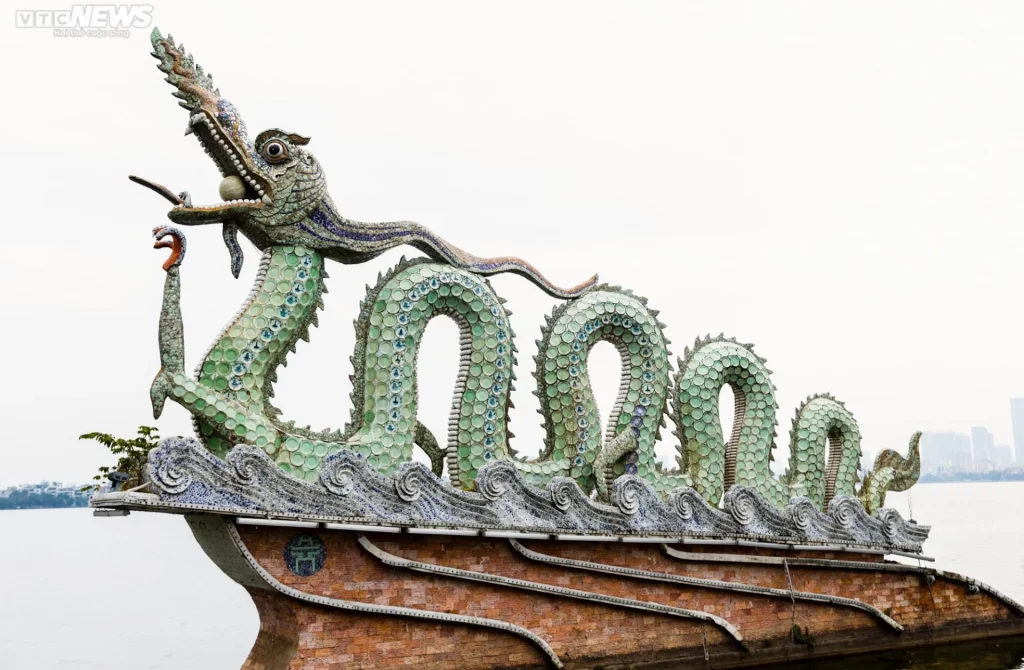 The dragon represents the nation’s identity that is linked with prosperity, power, and divine protection in Vietnamese culture. As a water-associated creature, the dragon plays a crucial role in rice cultivation – an important backbone of Vietnamese rural life and the nation’s economy. Farmers often sought after the dragon’s blessing for life-giving rains and nourishing harvests from the fertile fields of the Red River and Mekong deltas, making it an important blessing.
The dragon represents the nation’s identity that is linked with prosperity, power, and divine protection in Vietnamese culture. As a water-associated creature, the dragon plays a crucial role in rice cultivation – an important backbone of Vietnamese rural life and the nation’s economy. Farmers often sought after the dragon’s blessing for life-giving rains and nourishing harvests from the fertile fields of the Red River and Mekong deltas, making it an important blessing.
In addition, the dragon in Vietnamese culture is also a protector against natural disasters like floods or droughts, making it an element linked with prosperity and survival. This dual role as both a provider and protector illuminates the Vietnamese dragons as an enduring emblem in the nation’s cultural and spiritual heritage.
The Symbol Through Time: Ly – Tran – Nguyen Dynasty
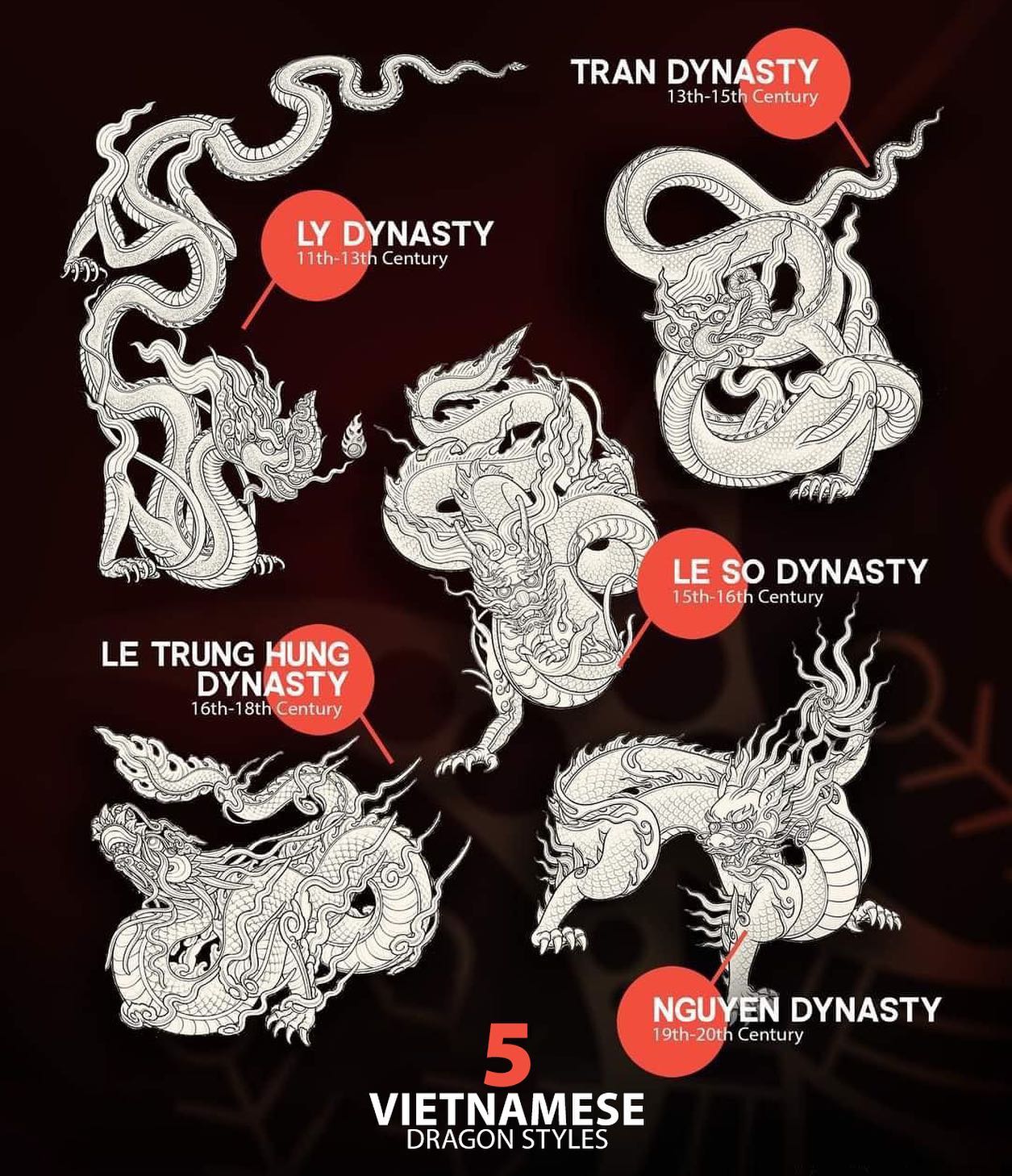
The Ly Dynasty (11th-13th Century)
The dragon is a central motif in state symbols and can be seen through clothing and architecture, representing enlightenment and prosperity. In this period, dragons were depicted with their elegance and flowy serpentine forms.
The Tran Dynasty (13th-15th Century)
As for this era, the dragon’s image became more dynamic and robust to represent the military strength needed to defend against invaders. It is solidified as a guardian with resilience, boosting the nation’s spirit during difficult times.
The Nguyen Dynasty (1802 – 1945)
Under this dynasty, the dragon attained its peak as a symbol of power and undivided authority. To showcase the dynasty’s ambition of unifying and modernizing the country, the symbol is adorned throughout many architectural sites such as in Hue Imperial City and various tombs.
Differences Between Vietnamese Dragons and Other Cultures
Chinese Dragons
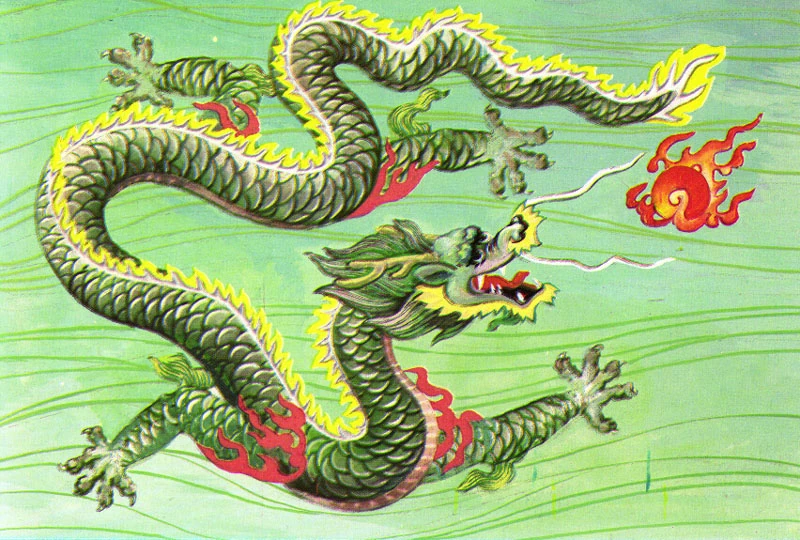 In Chinese culture, dragons are elaborate and carry imperial power. Whereas, the Vietnamese dragons are simpler and tied closely to the people. They represent harmony and blessing to everyday life, adding to their role as a protector. The number of claws is also different between the two nations where Chinese dragons have five claws while Vietnamese dragons have four to further emphasize balance.
In Chinese culture, dragons are elaborate and carry imperial power. Whereas, the Vietnamese dragons are simpler and tied closely to the people. They represent harmony and blessing to everyday life, adding to their role as a protector. The number of claws is also different between the two nations where Chinese dragons have five claws while Vietnamese dragons have four to further emphasize balance.
Korean Dragons
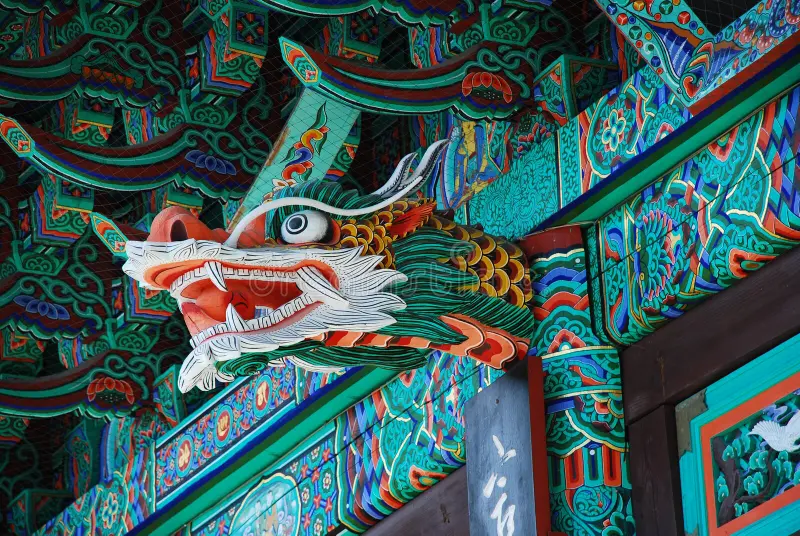 Dragons in Korean folklore also tend to represent the balance between benevolent and powerful beings. It is also associated with mountain and river worship, emphasizing Korea’s landscape. But unlike stylized features like Vietnamese dragons, Korean dragons are more aquatic with features reminiscent of sea creatures.
Dragons in Korean folklore also tend to represent the balance between benevolent and powerful beings. It is also associated with mountain and river worship, emphasizing Korea’s landscape. But unlike stylized features like Vietnamese dragons, Korean dragons are more aquatic with features reminiscent of sea creatures.
Japanese Dragons
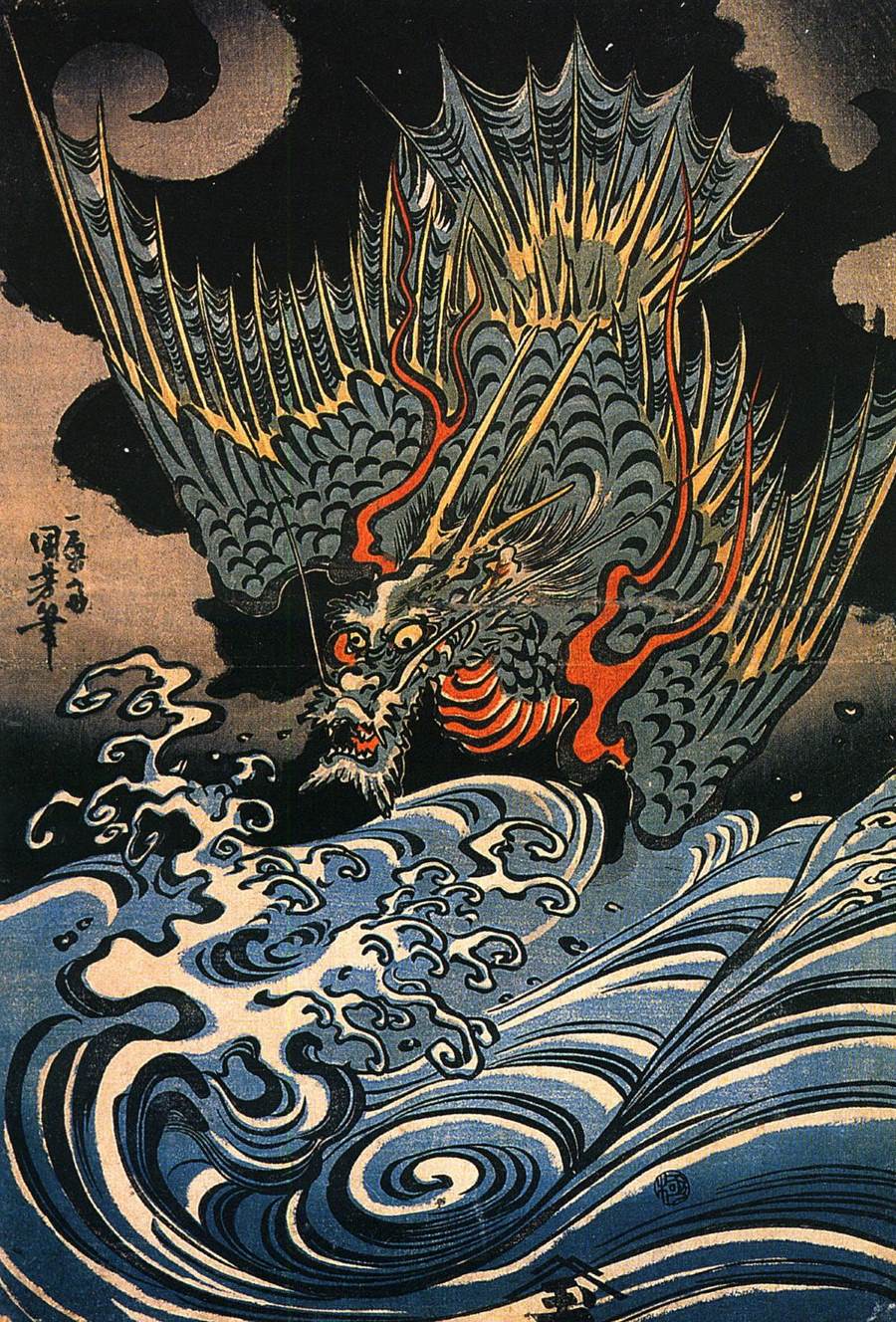 They are a symbol that ties to more elements such as storms, weather, and destruction. The Japanese dragons’ characteristics are a mix of serpentine with storm-like traits and have a huge connection of nature and weather controls.
They are a symbol that ties to more elements such as storms, weather, and destruction. The Japanese dragons’ characteristics are a mix of serpentine with storm-like traits and have a huge connection of nature and weather controls.
Western Dragons
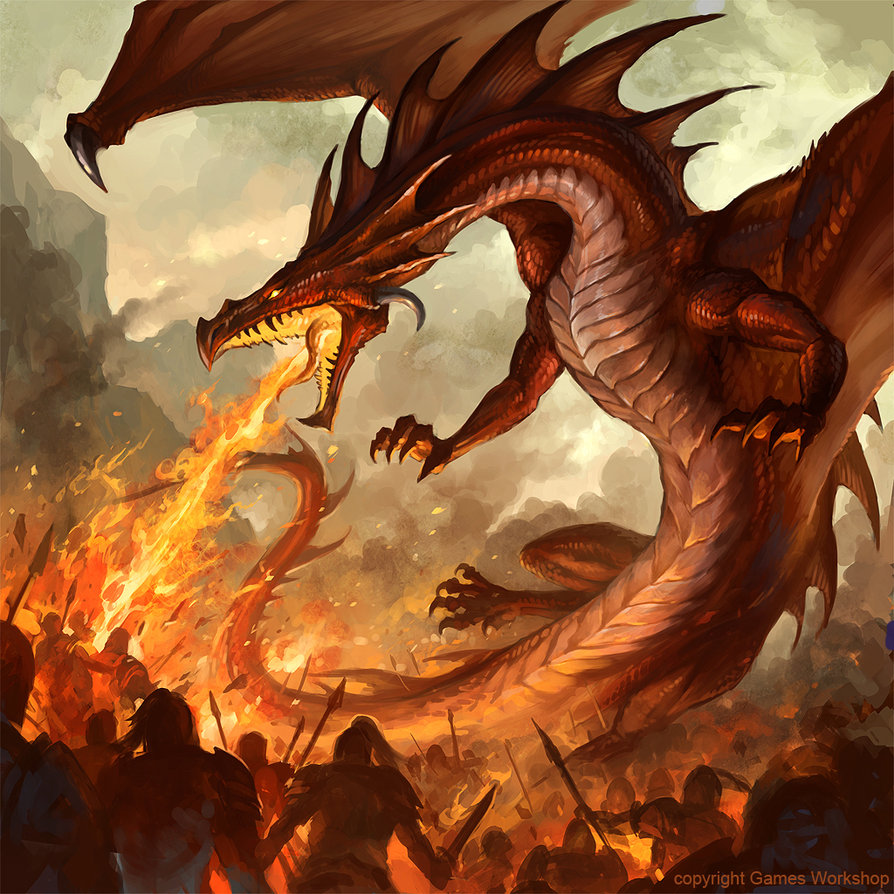 In Western stories, dragons are fire-breathing and menacing creatures, often associated with destruction. In contrast, Vietnamese dragons are benevolent protectors, linked to life and fertility. Despite these differences, all dragons are symbols of strength and supernatural influence.
In Western stories, dragons are fire-breathing and menacing creatures, often associated with destruction. In contrast, Vietnamese dragons are benevolent protectors, linked to life and fertility. Despite these differences, all dragons are symbols of strength and supernatural influence.
The Dragon Symbol in Vietnamese Arts, Crafts, and Architecture
Unlike other cultures with their fierce, imposing dragon images, Vietnamese dragons have slim, elongated bodies with harmonious curves to embody grace and balance. Their facial expression exudes majesty while maintaining a benevolent aura, as can be seen throughout Vietnamese traditional arts, crafts, and architecture.
Depictions in Traditional Crafts
Vietnamese dragons are embedded in traditional arts and crafts, reflecting cultural significance and aesthetic value. Everyday items like ceramics, embroideries, or furniture are adorned with the symbol.
Ceramics
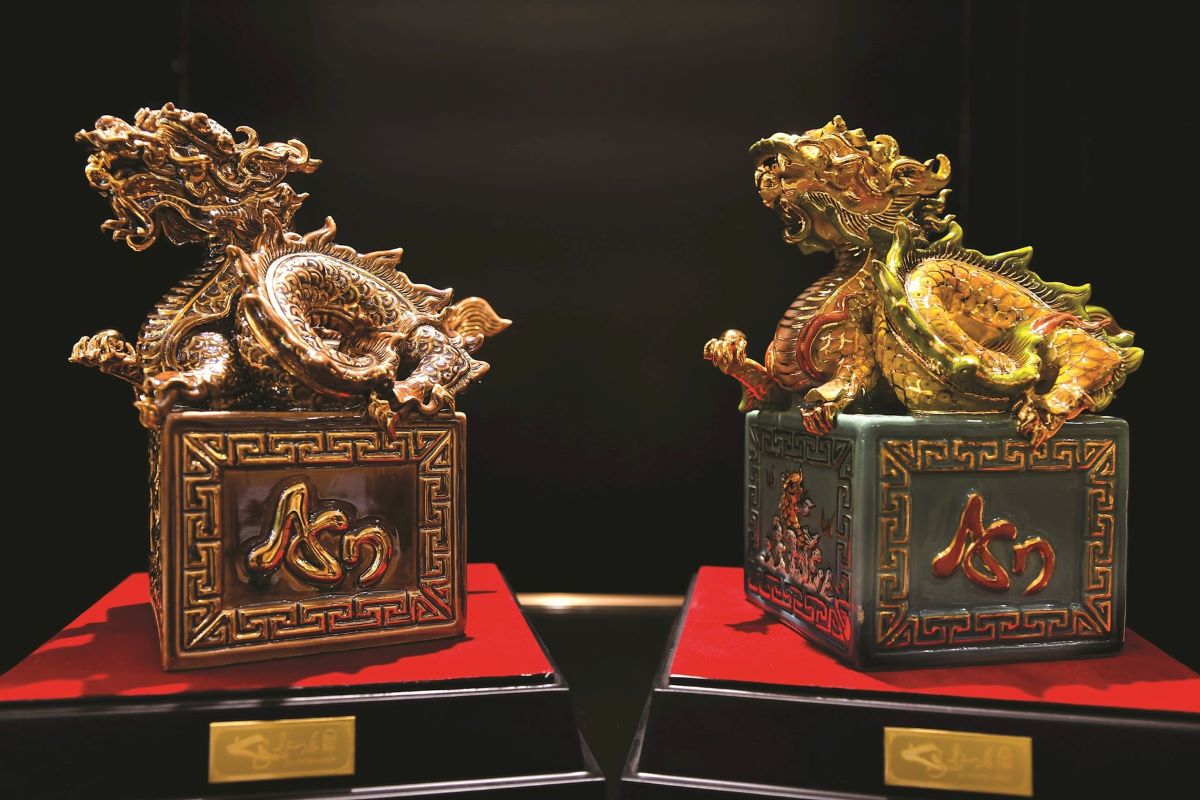 Dragons are a prominent design in Vietnamese culture, particularly in the pottery of Bat Trang, a pottery village near Hanoi. Artisans often depict dragons in serpentine forms with their flowy and powerful shape, emphasizing their elegance and connection to water.
Dragons are a prominent design in Vietnamese culture, particularly in the pottery of Bat Trang, a pottery village near Hanoi. Artisans often depict dragons in serpentine forms with their flowy and powerful shape, emphasizing their elegance and connection to water.
Embroideries
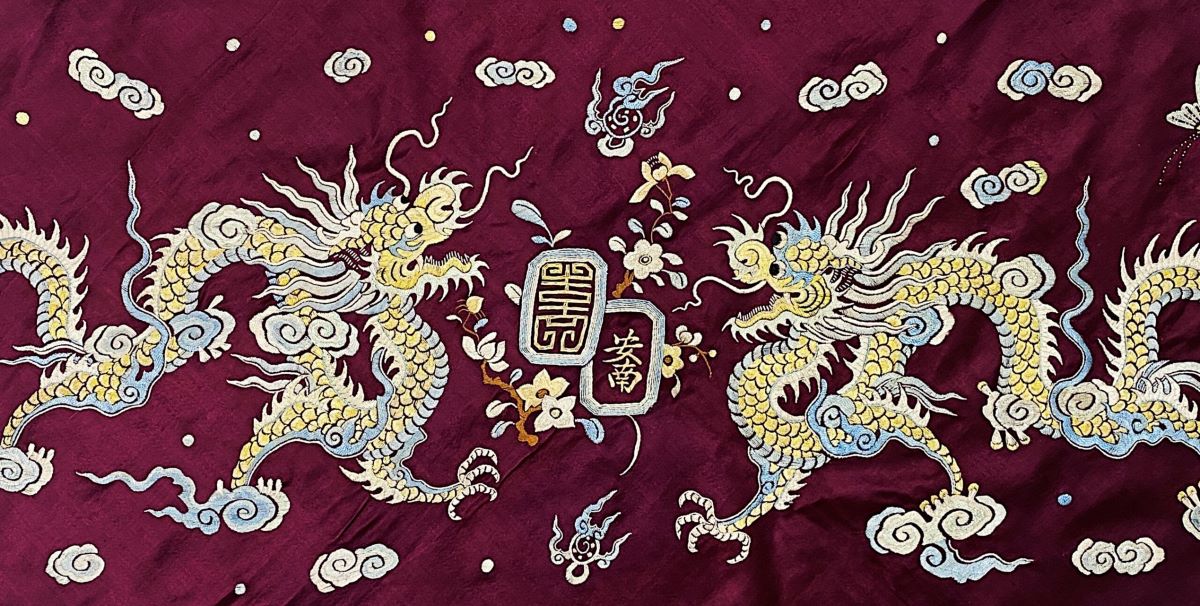 The most popular depiction of dragon embroidery is the royal garments, especially during the Nguyen dynasty, which incorporated their symbol of power and authority. Today, Vietnamese dragons can be seen on textiles like wall hangings, beddings, and ceremonial banners.
The most popular depiction of dragon embroidery is the royal garments, especially during the Nguyen dynasty, which incorporated their symbol of power and authority. Today, Vietnamese dragons can be seen on textiles like wall hangings, beddings, and ceremonial banners.
Furniture
It is favored by Vietnamese people to own wooden furniture items with carved dragons in legs and frames of altars, chairs, and cabinets. Because they reflect the dragon’s protective and auspicious qualities.
Vietnamese Dragons in Architecture
 In thousand-year-old temples and pagodas, dragons are a central piece that appears on roofs, columns, and walls to illustrate divine guardianship and spiritual energy.
In thousand-year-old temples and pagodas, dragons are a central piece that appears on roofs, columns, and walls to illustrate divine guardianship and spiritual energy.
Roof Decoration
The curved roofs of temples are magnificent with the dragons at their edges, rising towards the sky. This design is believed to link with the energy and connection to the heavens.
Sculptures and Reliefs
Vietnamese dragons are frequently sculpted into stone or wood panels with clouds or water surrounding them, cementing their ties to nature and protection.
Gateways and Entrances
Dragons are prominently placed near gateways and entrances of sacred spaces for their symbolic visual of divine guardianship, notifying visitors of a sacred ground of power, respect, and more.
Urban and Modern Architecture
Besides traditional sacred sites, the Vietnamese dragons extend their influence into modern architecture and urban design. It is a combination of traditional and contemporary designs. Modern art styles and methods are used to showcase the symbol through intricate wood panels at homes or smaller furniture items like vases and bowls.
Representation in Festivals and Rituals
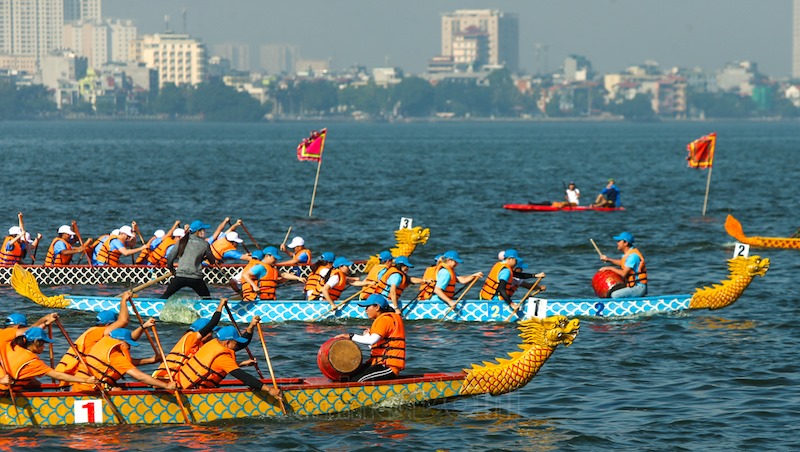 During the Lunar New Year, the dragon dance performance is a celebration of the creature’s power and vitality, believed to bring luck and happiness to the community. With traditional music, the dragon symbol energizes the people and also creates a lively atmosphere, warding off evil spirits to invite positive energy to the new year.
During the Lunar New Year, the dragon dance performance is a celebration of the creature’s power and vitality, believed to bring luck and happiness to the community. With traditional music, the dragon symbol energizes the people and also creates a lively atmosphere, warding off evil spirits to invite positive energy to the new year.
Water-related festivals are a way to honor the dragon as a guardian of rivers and a bringer of rain. Dragon boat races, for example, are often held during the summer festivals, emphasizing the dragon’s role as a source of vitality. Boats are crafted in the shape of dragons where participants row in a synchronized rhythm, evoking the dragon’s powerful strength.
The Dragon Symbol in Vietnam’s Modern World
Vietnamese Dragon – a National Icon
The dragons continue to represent Vietnam’s identity and progress. It has grown into a multi-dimensional symbol that presents Vietnam’s progressiveness besides its history and origins. In government seals, corporate logos, and cultural branding, their influences can be observed, reflecting the people’s respect and belief in the luck and prosperity that the symbol carries.
Modern Architecture Inspired by Dragons
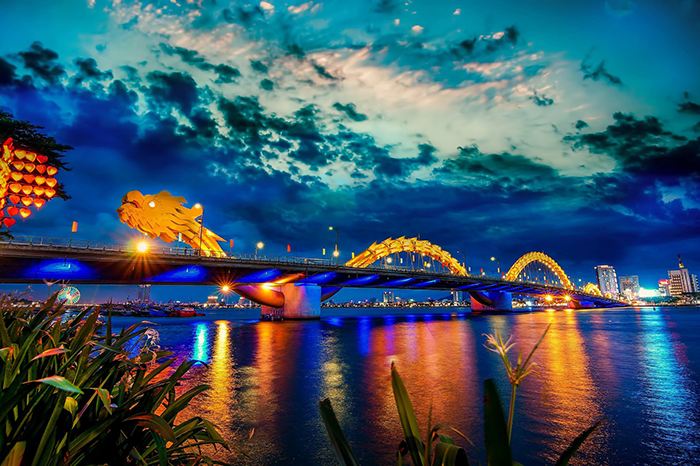 A striking example is the Dragon Bridge (Cầu Rồng) in Da Nang, designed to resemble a dragon flying across the river. This architectural marvel also breathes fire and water during evening shows, showcasing a powerful protector of the land. The bridge pays homage not only to the origins of the Vietnamese dragons but also represents modern Vietnamese aspirations and progress.
A striking example is the Dragon Bridge (Cầu Rồng) in Da Nang, designed to resemble a dragon flying across the river. This architectural marvel also breathes fire and water during evening shows, showcasing a powerful protector of the land. The bridge pays homage not only to the origins of the Vietnamese dragons but also represents modern Vietnamese aspirations and progress.
Other Destinations to Witness the Dragon Symbol in Vietnam
Thang Long Imperial Citadel (Hanoi)
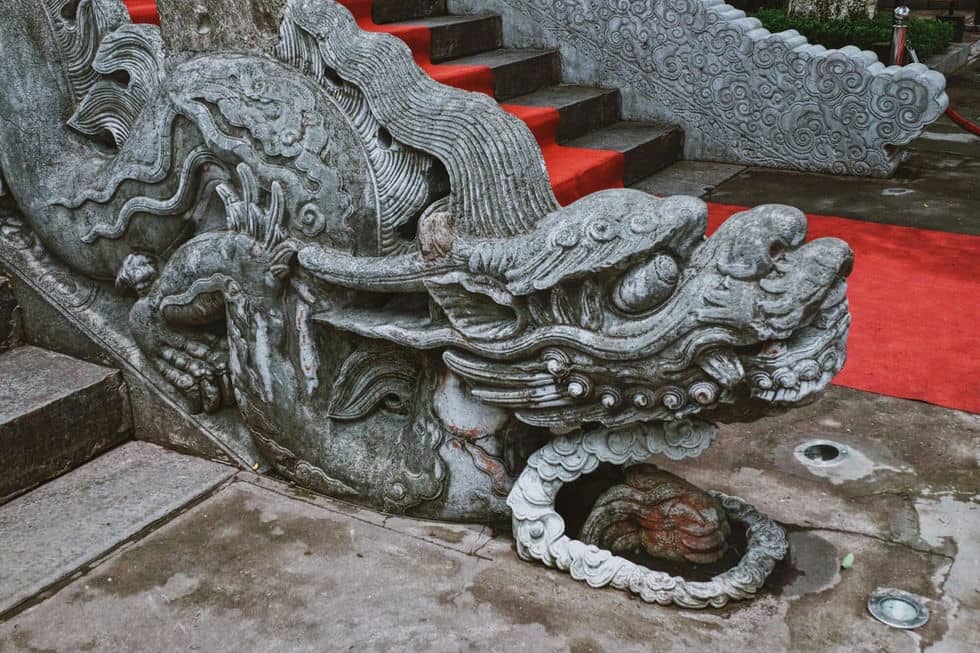 A UNESCO World Heritage Site featuring preserved dragon motifs from the Ly and Tran dynasties. The dragons here highlight their association with divine authority.
A UNESCO World Heritage Site featuring preserved dragon motifs from the Ly and Tran dynasties. The dragons here highlight their association with divine authority.
- Carved Dragon Stairs: The citadel features intricate stone carvings of dragons on staircases with their elongated bodies.
- Dragon Sculptures: Dragons are sculpted near gateways and important halls, serving as protectors of the citadel.
- Artifacts: Excavated ceramics and architectural fragments displaying dragons have been found throughout the regions, in connection to the belief in the dragon’s protection.
Hue Imperial City
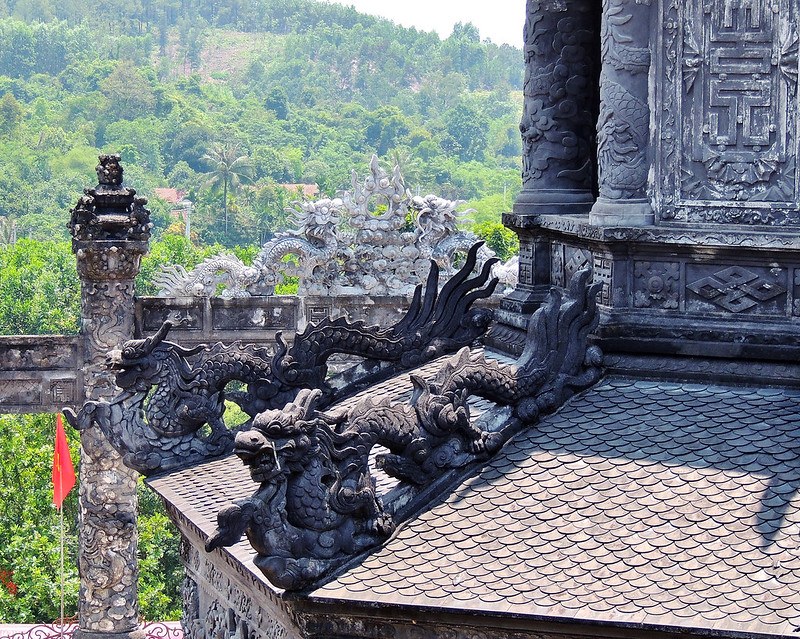 Another UNESCO World Heritage Site was home to the Nguyen Dynasty, the last imperial of Vietnam. And the dragons are a representation of the regal power of the Nguyen dynasty.
Another UNESCO World Heritage Site was home to the Nguyen Dynasty, the last imperial of Vietnam. And the dragons are a representation of the regal power of the Nguyen dynasty.
- Royal Palaces: The Throne Hall and other royal buildings are illuminated with dragon imagery from lacquered carvings, golden reliefs, and painted ceilings.
- Imperial Tombs: The Tomb of Minh Mang or the Tomb of Khai Dinh all have dragons integrated into stone pillars, walkways, and gates for their powerful and supernatural qualities.
- Dragon Screens and Walls: Designed intricately screens within the Forbidden Purple City for their purpose of decoration and symbolism, ensuring protection for the kings.
Hanoi and Ho Chi Minh City
The dragons also carry urban representations that can be found in public spaces, such as Ly Thai To Park in Hanoi or Saigon River in Ho Chi Minh City. These modern depictions present the enduring reverence of the dragon as a national symbol.
Best Way to Explore Vietnamese Dragons
There are many ways to witness such majestic beauty throughout Vietnam. But you make the most of the experience through curated tours and exclusive offerings for added tailored detail.
Traveling by train such as the luxury sleeper train – SJourney allows you to immerse yourself in Vietnam’s cultural treasure. Experience the dragon’s regal aesthetic in luxurious settings inspired by royal designs, showcasing the symbol that evokes safety feelings and cultural immersion.
In addition, off-train excursions include curated planned trips to regions that let you delve into the lore and artistry surrounding this mythical creature, such as the Hue Imperial city. Moreover, the train elegantly added detail to stops at smaller but culturally significant destinations like traditional craft villages where you can witness the dragon imagery woven into ceramics, embroidery, and woodwork. And visits to temples and pagodas from rural areas, allowing you to witness the heavy influences of the Vietnamese dragon within all nook and cranny of the country.
For more details, check out the itinerary here.
Vietnamese Dragons – Timeless Symbol of Past and Future
The dragon in Vietnamese culture is more than a mythical creature—it is a timeless symbol of unity, prosperity, and resilience. From ancient myths to modern marvels like the Dragon Bridge, it bridges Vietnam’s rich heritage and forward-looking spirit. Whether witnessed in traditional art, architecture, or folklore, the dragon continues to inspire and define the Vietnamese identity.
